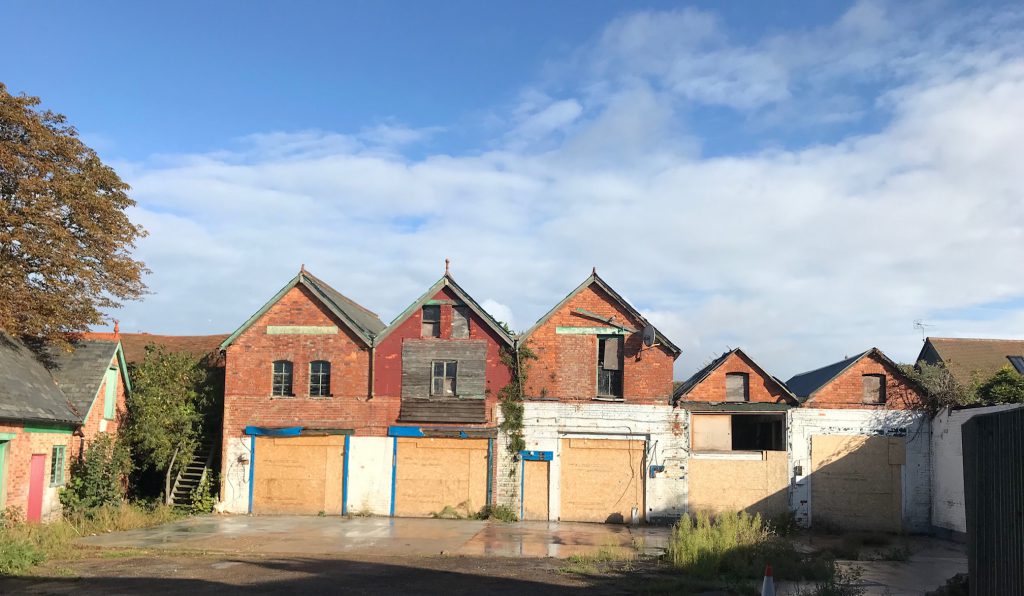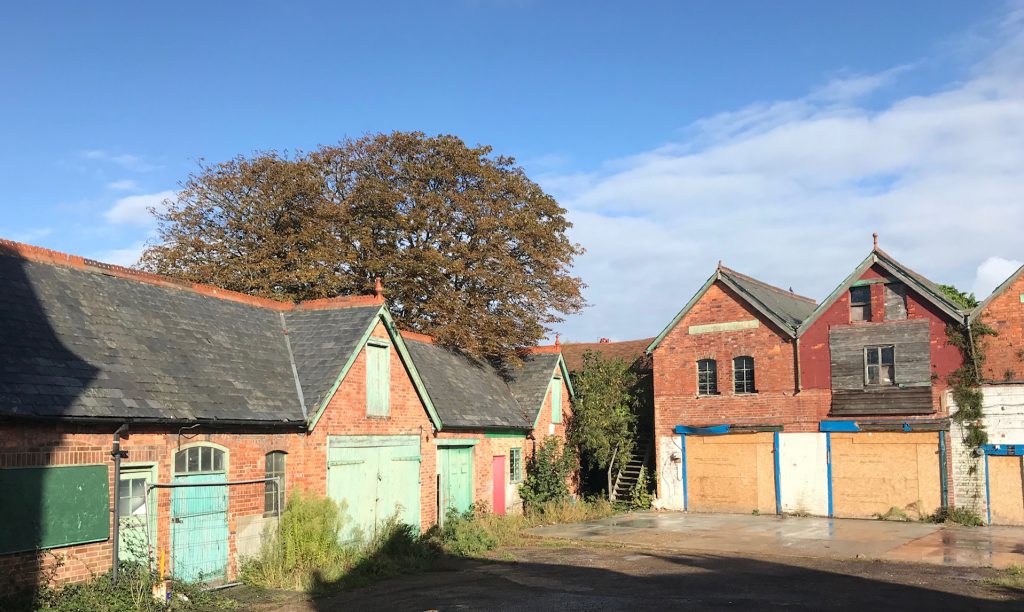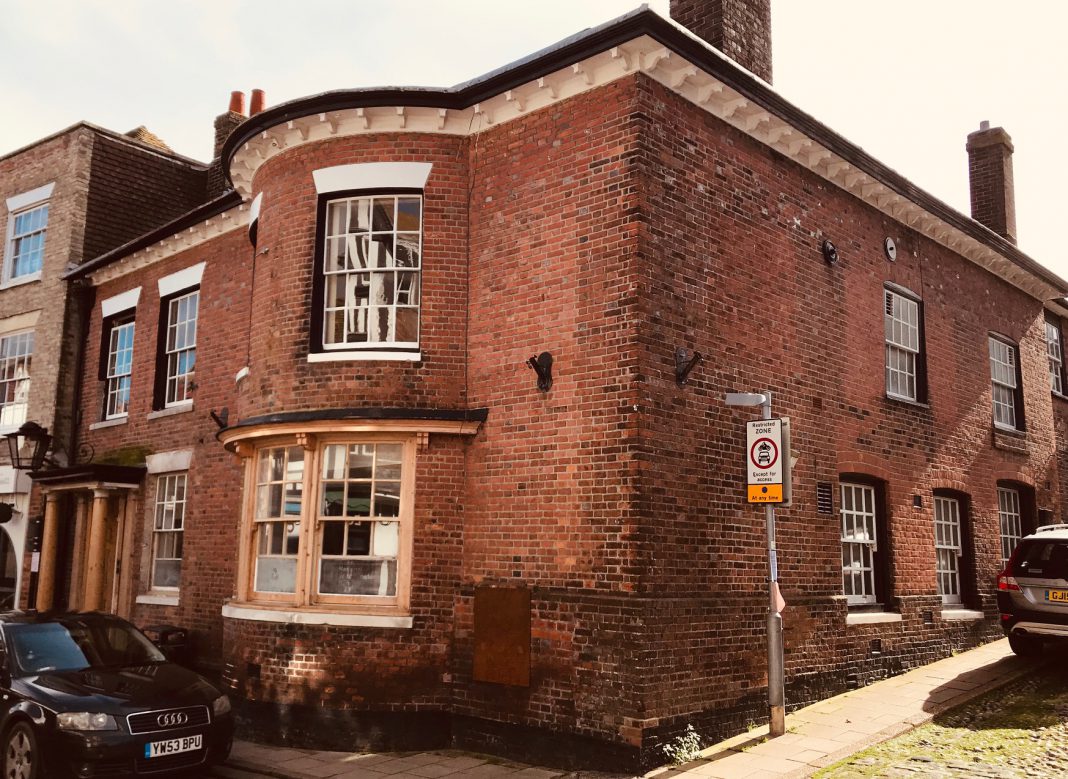With the demise of the High Street banks it seems that wherever you go at the moment there is a glut of empty premises in central locations – not a great look for any town – victims of this new age of advancing technology.
Many of the old banks seem unsuitable for retail use. Those which offer the potential for change often end up as coffee shops or pubs and are swallowed up into the corporate domain, others remain empty and unsightly, some attract planning applications for something different.
One of Rye’s recent casualties is the Nat West Bank on the High Street, joining the ranks of Lloyds, HSBC and Barclays which have all followed suit in recent times. Looking at the planning application (RR/2019/2043/L) for the former Nat West Bank at 85 High Street it is interesting to note that the building was once known as Langford House, a substantial family home with five bedrooms.
When Nat West acquired it in the 1930s, the bank put forward an application for change of use from an end-terrace residential dwelling to a bank, which was approved by the then local authority. When the bank opened in 1939 and the conversion took place, a banking hall was added together with safes and strong room, but thankfully, throughout the bank’s 78-year tenure many of the characteristic features were left unchanged other than taking out some of the original staircase.

The new owners have now submitted a planning application to reinstate the building to what was formally a substantial residential dwelling with very few proposed changes to the original plans (other than changes required to satisfy current building control) and it will be interesting to see how the application is determined.
On a separate application, planning consent has recently been approved (RR/2017/2217/P) for the redundant Victorian buildings at 17-19 Tower Street, to the rear of The Fish Café (see photographs) which now have permission for change of use, six units from commercial to residential and change of use of the former stable block to offices and/or shops, to be converted at some point in the future.

The application seemingly met with very little opposition and whatever your viewpoint is on the approval, the vacant and unsightly buildings will soon have a new lease of life rather than falling into a state of dereliction like others locally.
A question mark still hangs over the future of a number of vacant sites and buildings in and around the town, understandably these things take time to resolve but until they are, they remain a lasting first impression for visitors to Rye.
Image Credits: Nick Forman .




I thought RDC came into force in 1974 ? ?
This is a helpful article but I question the following, “Those which offer the potential for change often end up as coffee shops or pubs and are swallowed up into the corporate domain… “. “Corporate domain”? Really? From what shop owners have said (an anonymous survey by this paper would be brilliant) an increasing concern is that other businesses may close in the near future. I don’t think The Corporate Domain is at all swallowing up Rye. The decision to leave the EU has not helped bring visitors to Rye nor will lack of parking help more local residents shop in the town centre. Perhaps better than an entire wildflower meadows on the salts, additional parking surrounded by a border of wildflowers would be more practical and beneficial to the town. I would rather see coffee shops, restaurants or wine bars than the High Street becoming more residential. That will change the character of our lively town into one most of us probably would not welcome.
Can’t agree with the comment “The decision to leave the EU has not helped bring visitors to Rye” I think the resulting weak pound, as a consequence of the referendum result, has encouraged european tourists getting much better value for their Euro, to visit and has also increased the number of ‘staycations’ when foreign holidays look so much more expensive. I’d be interested to see the actual visitor numbers.
Behind the Georgian facade there is the timber frame of a 16th Century structure. As to the use as a bank on the map of 1859, 85 High Street is shown as already being the London & Countrywide Bank so its ‘commercial or business’ use goes back much father than the mid 1930s.
As to its future use, No 85 lies within the Core Town Centre Area as shown in blue in Figure 17 of the Rye Neighbourhood Plan and under the RNP Policy B1 a change of use or loss of employment will only be allowed if the following requirement is met.
Existing employment and business floor space will be safeguarded unless it can be demonstrated to the satisfaction of the Local Planning Authority that the premises are no longer suitable for employment and evidence has been submitted that demonstrates that the property has been actively marketed for at least 18 months on realistic market terms; further it is shown that there is no prospect of new employment and business occupiers being found or to more modern facilities within the locality including at Rye Harbour.
All four of the recently decommissioned banks fall into this category and in the Society’s view will need to meet this criteria.
If such an alternative commercial or business use cannot be found then residential would seem to be an acceptable use.
Of the three banks at the corner of West Street and the High Street only Lloyds was a purpose built bank. Both the Natwest and Barclays were private houses. Barclays in particular has a markedly changed frontage compared to photographs from the early 1900s.
The retail area of Rye has retreated over the last 50 years and continuing change is not, I think, unacceptable. If you wander round Rye you might be surprised to see how many houses were once shops – the windows give them away. And after all the three banks were never retail outlets so there is no loss to retail by their conversion. Better a house than an empty building?
It is stated that Natwest acquired Langford House in the 1930s. Natwest was formed in 1970, so presumably, it was either the National Provincial bank or the Westminster bank prior to 1970.